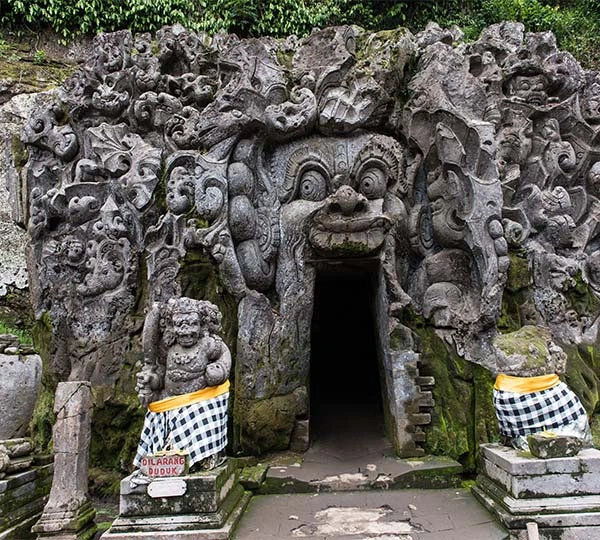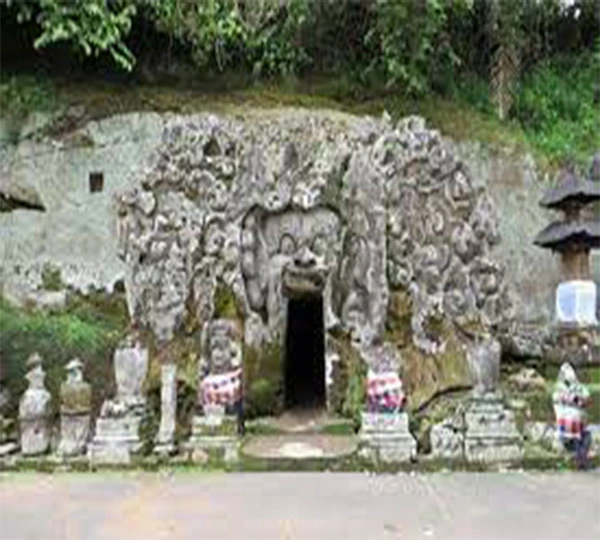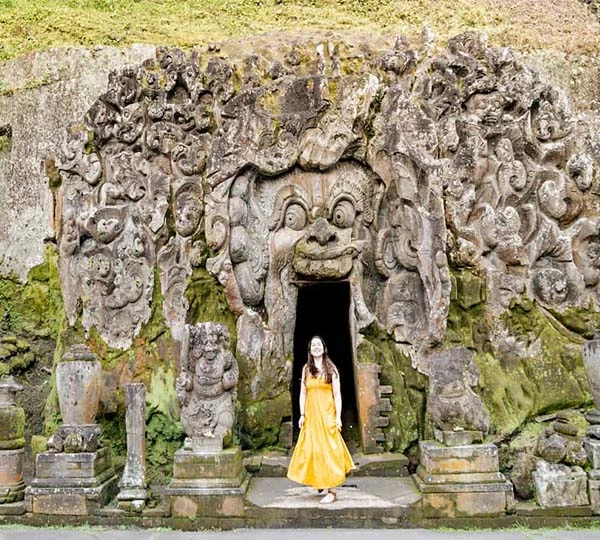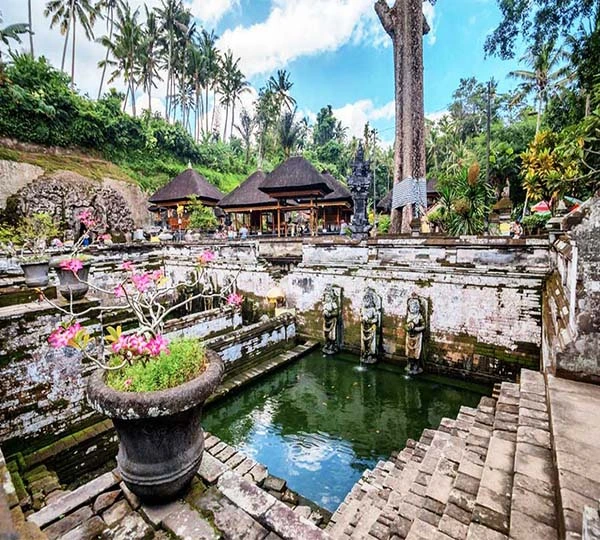
Info
The Elephant Cave site is a relic site of the Majapahit Kingdom. This site was
discovered in 1922, at the time of L.C Heyting, he was a young employee from
Singaraja. Heyting said that he saw a monster with wide ears like an elephant.
Then three years later precisely in 1925 Nieuwenkamp visited the site to prove
what Heyting was told.
The Elephant Cave site was once a sacred place
located on the side of the road between Pliatan and Bedulu through the
tributary of the Panatu river. Ensure that the Elephant Cave is mentioned
in Kakawin Nǎgarakitǎgama (14:30) in his Mpu Prapanca essay during the
Majapahit era. Lwa Gajah or Elephant Cave is located in Ba predecessor
(now Bedulu), which is the seat of a Buddhist figure.
History
The name Elephant Cave may have originated from the name Lwa Gajah in the
Nǎgarakitǎgama which means "waterfall", or it may have seen the head of
the kla above the cave entrance. If you look closely, the decoration of
the cave door is very similar to the head of the giant. Why? Because it
looks like using earrings, this raksasi looks very scary. eyes bulged to
the right, but there was no trunk.
This cave faces south, carved into a solid cliff that juts out. The
carving is very smooth and nice.
In addition, there are reliefs of
animals (Pigs and Turtles), giant, creeping creatures that adorn
the overhanging walls of the padas. There is a T-shaped hallway
and on the walls of the hallway there are 15 niches. The door of
this cave is two meters high and one meter wide. On the front
wall of the cave there are empty niches / niches. Meanwhile,
at the western end of the T tunnel, there is a four-armed
Ganesha statue, 105 cm tall. and on the east side there is
a pedestal with three phalluses on it, its height is 46.5 cm,
and it is surrounded by eight small phalluses.
Prices Info
| Category | Price of admission |
|---|---|
| Local | IDR 30.000 / person |
| Foreign | IDR 50.000 / person |



Maps
© 2022 Balivacation - Bali Travel Guide & Information. All Right Reserved